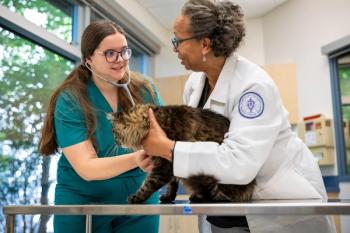
Letter to dvm360: Heres the real problem with accreditation and the COE
Three veterinarians explain the root of their COE concerns. (Hint: It isnt the distributive model.)
An article in September 2016's dvm360, “
This characterization is an oversimplification of the concerns surrounding the current structure of the COE. While it's true that some
Our profession's gatekeeping accrediting agency is currently housed under the same roof as our profession's largest representative association. This relationship creates an inherent conflict of interest that leads to problems for the COE in thoroughly and consistently upholding accreditation standards, which makes it impossible for the AVMA to fulfill its primary mission of advocating for its membership.
This conflict of interest is not a new or unusual condition-It's why accrediting bodies have such stringent conflict of interest policies. It has led most professional organizations to formally separate themselves from accrediting agencies as a means of protecting their membership from legal liability. In the past, the federal government has challenged the control that the American Medical Association and the American Bar Association have had over their respective accrediting agencies.
But there is no need to look outside our profession for examples of the problems such conflicts of interest invite. As evidence, consider the following:
- In 2000, Western University of Health Sciences
sued the AVMA when a letter of reasonable assurance was not imminent. Note that they did not sue the COE.
- Due to a resolution put forth by the Texas VMA, the AVMA convened a committee to study workforce and accreditation issues. However, the committee's mission was thwarted by the AVMA's legal counsel on the grounds that commenting on foreign accreditation would violate Federal Trade Commission regulations. To be clear, this was an example of the AVMA choosing to back away from its mission of advocating for its membership due to the conflict of interest created by its control of the COE.
We have been told that the AVMA and COE are now
Kurt Matushek, DVM, MS, editor of the Journal of the American Veterinary Medical Association,
Consider that the
We are just as troubled that the association's recent alterations have done nothing to sufficiently change the relationship between the AVMA, the AAVMC and the COE. The AVMA would like us to believe that they've come to an understanding of what it is we desire in both our representative association and our accrediting agency as a result of listening sessions. This is simply not true. The nature of the relationship between these two has not changed.
We submit that the time has come for our profession's largest association and accrediting agency to leave the 1970s and enter the 21st century.
Ryan G. Gates, DVM
Don Woodman, DVM
Carl Darby, DVM
Newsletter
From exam room tips to practice management insights, get trusted veterinary news delivered straight to your inbox—subscribe to dvm360.




